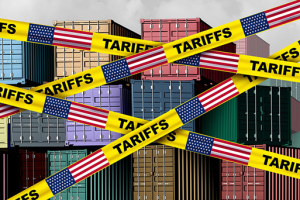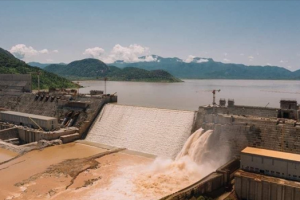
July 17, 2023 could be scripted as part of a new chapter of modern day Ethiopia, an extraordinary day or milestone on which half a billion tree seedlings have been planted in one single day. The Ministry of Agriculture has disclosed that over 360,000 hectares of land have been prepared to accommodate the stated number of saplings.
At the same time, it has added 9,500 sites have been identified and the sapling planting program will be transmitted to the center by experts assigned in all the places. What is more the mapping of the planting sites and developments of website were carried out in collaboration with the Ministry of Innovation and Technology and the Space Science Institute.
The ministry has revealed that 60 percent of the saplings to be planted are for agroforestry, 35 percent for watershed development and forestry, and 5 percent for urban beautification. Mapping and GREENLEGACY.ET website have also been developed in order to make the planting activities directly accessible to people across the world. Experts are also assigned in each site to help people get along in the programs without any hiccups, it is learned.
By all parameters this must be a world record because we have never heard of any nation claiming to have planted so many tree seedlings in a single day. Ever since Prime Minister Abiy Ahmed began the movement of greening Ethiopia with what was called the Green Legacy Initiative, in four years Ethiopia has planted twenty five billion seedlings in every part of the country.
This has been a huge movement that has mobilized millions of citizens who planted trees but there have been also tens of thousands of citizens mostly youths who were involved in the preparation of the tree seedlings in the thousands of nurseries across the country thus giving employment to all these youths. Then there are those who take part in preparing the holes on the sites where the seedlings are bound to be planted and all of the administrative and support staff of all the various municipalities as well as the offices and bureau of agriculture spread throughout the country.
To realize the first phase of the Green Legacy Initiative it has taken the collaboration and the concerted efforts of millions of Ethiopians under an inspired leadership and the promotion of all media outlets regarding the advantages of planting trees and greening the country so that people feel ownership of the initiative and engage actively in the movement.
It is to be remembered that planting saplings especially in the midst of the rainy season had become the routine of many people most notably Prime Minister Abiy Ahmed who after every activity he carries out such as meeting a delegation, some guest who came even from abroad and those who came to have a courtesy call at his office, they would all be taking part in the planting of a seedling at his office or any other venue where he was stationed at the moment.
Statesmen who came to visit him were also part of this venture and whenever we heard the news of the premier meeting a guest we would know about the meeting but at the end we would also see that the guests including the premier would plant a seedling. This had a huge impact on the psychology of citizens seeing their premier getting down to earth and planting a tree with his bare hands and inviting others to do the same. Once we heard him remark jokingly ‘we must take the practice of touching the earth with our bare hands without thinking that we are getting dirty because eventually when we all die the earth will be the place where we will be buried.
Over the past years since the beginning of the first phase of the Green Legacy Initiative, Ethiopians have come to appreciate the whole concept of planting trees also because there has been massive publicity and constant campaign over all sorts of media outlets. We have seen huge posters and banners with the premier planting a seedling and other high ranking officials all engaged in planting the seedlings in the main squares of urban areas.
On pivotal days such as the one coming 17 July 2023 it would be a massive mission of planting tree seedlings in every corner of the country by practically every one notwithstanding differences in age, gender, social status and other personal conditions because practically everyone is urged to take part in this record breaking venture and be part of the historical and unprecedented event.
The Ministry of Agriculture has announced that everything is ready to achieve this objective of planting the half a billion seedlings because they are already prepared and availed to the various administrative districts, to the locations where the holes are already dug and the saplings readied. The schedules are already prepared and the logistics as well are ready.
This time it is not only normal tree seedlings that are to be planted but also fruits and plants and vegetables that are meant for food purposes. We have heard that avocados, papayas, mangoes and others are ready to be planted and that would contribute also economically because when they are mature they could be not only consumed by the local population at relatively cheaper prices thus contributing to food security but also part of an export package and thus be a foreign exchange earner.
Many people are heard saying that planting the seedlings alone is not enough because for the planting to be effective and fruitful there is need to nurture the seedlings until we are sure that they grow successfully. That is why after planting them there are also arrangements to give them enough water and make sure that they are kept out of the reach of predators.
According to figures released from the pertinent authorities, in the past years most of the seedlings have been growing well because they were given enough attention. According to the numbers released, as many as eighty percent of the seedlings have grown well. Advice has been given to those who have planted the seedlings to also go once in a while and control that they get enough water so that they succeed in flourishing. Experts say some saplings need more attention and should be nurtured in a particular way in order to bear fruits.
There are reports that already positive results are being experienced because there are tendencies that the climate itself is beginning to slowly change in reaction to the movement. There have been experienced certain dry hills now covered completely with vegetation thanks to this initiative. Ethiopia was once a green land with as much as forty per cent of the land mass covered with greenery including various types of trees both indigenous as well as imported ones. Today, only four per cent of the land was covered with forests before the launching of the Green Legacy Initiative.
The first phase of the Green Legacy Initiative that ended last year experienced the planting of twenty five billion seedlings. After the successful implantation the first phase, the second phase of the initiative has been launched by Prime Minister Abiy Ahmed last month and the apex of such movement will be on July 17, 2023 with the planting of a record of half a billion seedlings.
Of course this will not be the end of the initiative because it will continue well into the summer as well where particularly there are conditions the seedlings can be planted and survive the weather conditions of the less wet season. In areas where the climate is moderate and there are no risks of lack of water, the process of planting tree seedlings continues. It has now become a tradition of Ethiopians who have come to appreciate that planting saplings must be part of our lives and keeping the environment green and clean from every type of waste is important.
What is more, Ethiopia is now sharing its knowhow on how to prepare these trees seedlings in the nurseries and how to proceed with the planting and which one to plant where to neighboring countries. Already it has sent millions of tree seedlings to neighboring countries so that they too are a part of the movement and the more nations are involved in such initiatives the more effective the results on the climate will be.
The Horn of Africa has in particular been gravely impacted by the consequences climate change with frequent aberrations of the climate. We have had long spells of drought and lost so much cattle in the past four, five years and the causes are well articulated. At times there have been excessive flooding and landslides with hundreds of people dead while thousands more have been displaced by the terrible climatic conditions provoked by climate change.
These poor countries have not had the economic means to withstand the losses. What they lose is the only capital they have unlike the richer countries which have their insurance schemes or better economic resources. They can withstand huge losses without risking their lives unless there are devastating floods resulting in multiple casualties and extensive damage to residence areas and infrastructure.
In the past the world’s reactions to such calamities has been muted and little was done to address the hardships countries such as Ethiopia, Somalia, Sudan, Kenya and others had to undergo. There might have been some emergency handouts in humanitarian aid but this could not basically change conditions on the ground and drastic measures of reducing the gas emissions across the world and the decrease in temperatures have been urgently recommended by climate scientists.
However, the huge economies that have been polluting the earth for decades and contributing to this sad situation have been criticized by climate activists for not having acted commensurate with the magnitude of their responsibilities in the creation of the crisis situation in the first place.
Environmentalists are not at all satisfied with the measures taken by these huge economies not only in terms of the reduction of the gas emissions but also in terms of assisting the poorer countries most affected by the crisis due to the frailty of their economy further pushed down the drain by the crisis. The activists argue these countries should be assisted to build a green economy and be more resilient to the aberrations of climate change. It is noted that only a fraction of the pollution has been caused by the developing countries.
In this regard the Ethiopian initiative has been highly appreciated and admired by all those who have been watching developments in Ethiopia. Even if according to some skeptics, Ethiopia may have several other more urgent socio-economic priorities, the fact that it has given maximum attention to the endeavours of following a green economy and re-greening its land has been highly appreciated. Hopefully, the devastating impact of climate change would somehow be alleviated with another round of four years of greening the country during which all in all the hallmark of fifty billion tree seedlings will be reached.
With this pace of greening the country, there can be no doubts that the effects will not retard to arrive and eventually be felt everywhere. Many observers has said other countries as well should follow the example of Ethiopia because the effects of climate change do not have borders and affect everyone on this earth and that is why the concerted and consolidated efforts of all countries are required for the results to be successful in all and change the course of nature and at the same time history.
BY FITSUM GETACHEW
THE ETHIOPIAN HERALD WEDNESDAY 19 JULY 2023





